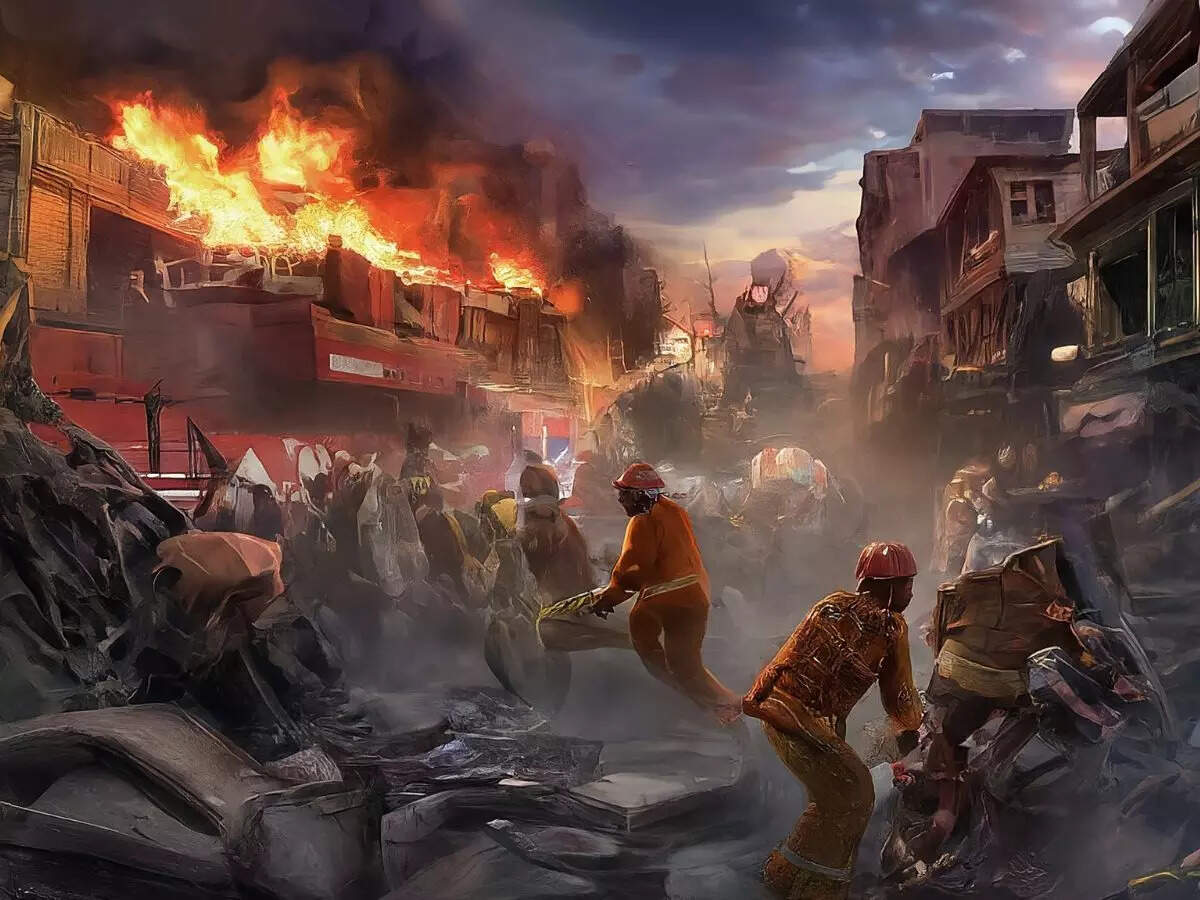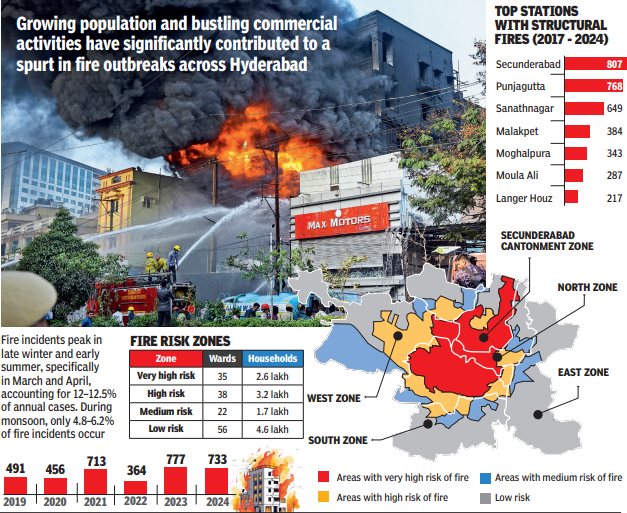
As many as 13 lakh residents in 2.6 lakh households in the city are at a very high risk of fire accidents, revealed a study.
Ironically, the study, titled ‘Hotspot Analysis of Structure Fires in Urban Agglomerations: A Case Study of Hyderabad,’ comes at a time when the city is witnessing a spurt in fire accidents in residential and commercial areas. Conducted by three professors from the department of geography (Osmania University and Nizam College, Institute for Excellence in Higher Education, Bhopal), the study was published in the Asian Journal of Geographical Research.
According to the study, the densely built regions with high population density, considerable commercial activity, and mixed land use contribute significantly to fire hazards. For example, the city’s central zone exhibits the highest concentration of very high-risk areas for fire at 64.86%, followed by the North East Zone at 42.56%.
35 wards most vulnerable
Notably, as many as 35 wards are categorised as having a very high fire risk and have a population of nearly over 13.14 lakh, with a population density of 17,669 people per sq km.
These wards are also home to 2,63,197 households and cover an area of 131 sq km, making them some of the most vulnerable areas in Hyderabad in terms of fire hazards The high-risk wards identified in Hyderabad include Venkateshwara Colony, Gandhinagar, Red Hills, Himayatnagar, Bholakpur, Musheerabad, Boudha Nagar, Adikmet, Ramnagar, Kavadiguda, Banjara Hills, Khairatabad, Bansilalpet, Ramgopalpet, Monda Market, Bala Nagar, Somajiguda, Ameerpet, Sanath Nagar, Fateh Nagar, Vengalrao Nagar, Kachiguda (Barkathpura), Jambagh (Nampally), Mehdipatnam, Mallepally, Nanalnagar, Vijayanagar Colony, and Cantonment.
The study, which used GISbased hotspot analysis to assess the spatial distribution of structural fires in Hyderabad and identify high-risk areas, found that over 4,000 structural fires had been recorded in the city since 2017.
These fires are usually caused by electrical malfunctions, faulty wiring or defective appliances, highlighting the need for improved electrical safety standards and regular inspections.
Careless smoking
According to the study, fire incidents mainly occur due to the area’s dense urban fabric, commercial activity, and infrastructure vulnerabilities. Careless smoking also emerged as the leading cause of fire accidents, alongside mechanical heat or spark.
Additionally, increasing electricity demand, mixed land use and seasonal climatic variations contribute to heightened fire risks.

“The city’s expanding industrial zones and high-density residential areas present challenges for fire risk management. Further, inadequate fire safety infrastructure, congested urban cores and evolving industrial growth patterns necessitate a detailed spatial analysis of fireprone areas to improve fire response planning and mitigation strategies. The study concludes that these findings underscore the need for strategic interventions, such as repositioning or adding fire stations in highrisk areas, enhancing electrical safety protocols, implementing targeted public awareness campaigns, and adopting climate-responsive urban planning,” explained the study.
Fire station placement key
The study pointed out that areas such as Gachibowli, Chandanagar, Secunderabad Cantonment and Tirumalagiri are in the extended response zone. To ensure timely responses, the study recommended either the construction of multiple fire stations or the improvement of infrastructure in these areas.
Meanwhile, high area coverage in the delayed response zone is crucial due to the commercial and residential significance of areas.
The study emphasised that strategic fire station placement is crucial.
“Research on fire incidents from 2017-2024 in Hyderabad, was carried out across different zones of Greater Hyderabad to identify regions susceptible to fire incidents and determine root causes. Data collection and analysis took eight months before the findings were published in the research paper,” said R Veena, professor, department of geography, Osmania University.











